Reading Alignment Angles
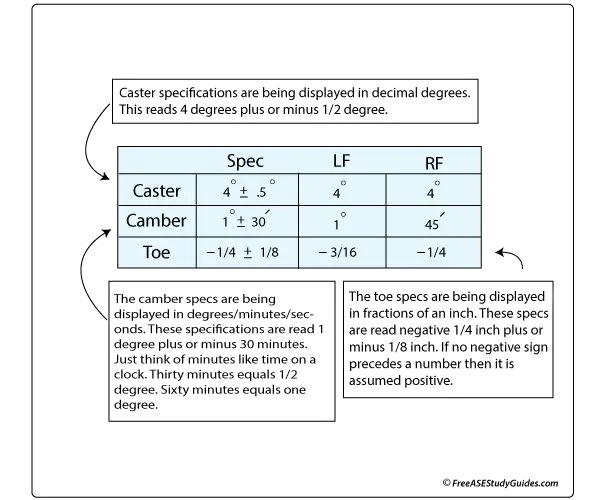
The chart above shows the different methods for displaying wheel alignment angles. The specifications in the chart are for the front of the vehicle.
The Caster Angle
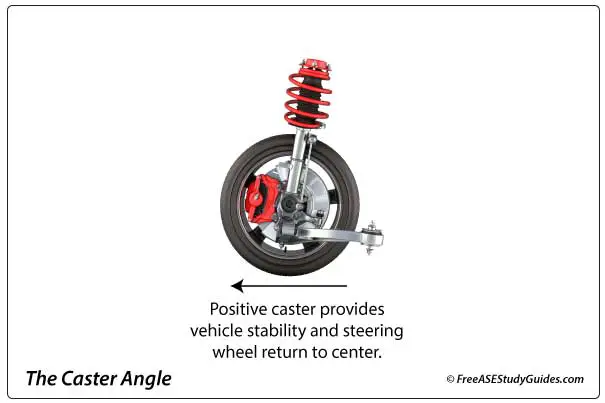
The caster angle, viewed from the side of the vehicle, is the forward or rearward tilt of the steering axis. Positive caster provides steering wheel returnability and better stability. Negative caster is rare and typically used on heavy-duty applications.

The caster on the vehicle in the chart is four degrees (4°) plus or minus one-half degree (.5°). The vehicle's caster angles are within specifications.
The Camber Angle
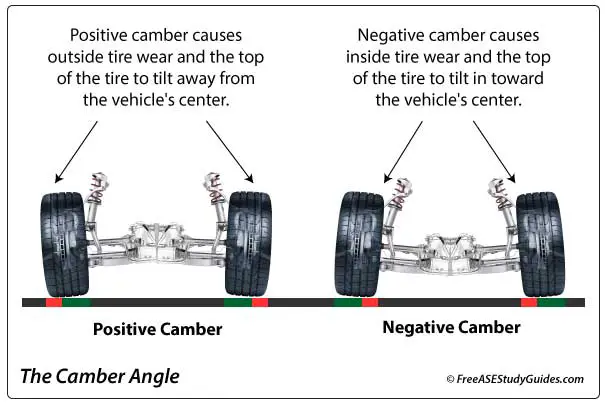
The Camber angle, viewed from the front of the vehicle, is the angle or tilt of the tire toward or away from the vehicle's center. A vehicle's camber affects tire wear and stability. The camber angle is measured and displayed in degrees. A zero-camber setting is best for going in a straight line. Excessive negative camber results in inside tire wear. Excessive positive camber results in outside tire wear. A vehicle will pull to the side with the most positive camber while driving forward.

The camber is one degree plus or minus 30 minutes. The (') or minutes symbol represents angles like an actual clock. The thirty-minute reading equals one-half degree. Notice the 45' or 45-minute reading for the RF. It is equal to .75° (decimal degrees). Most of today's alignment racks display camber in degrees.
The Toe Angle
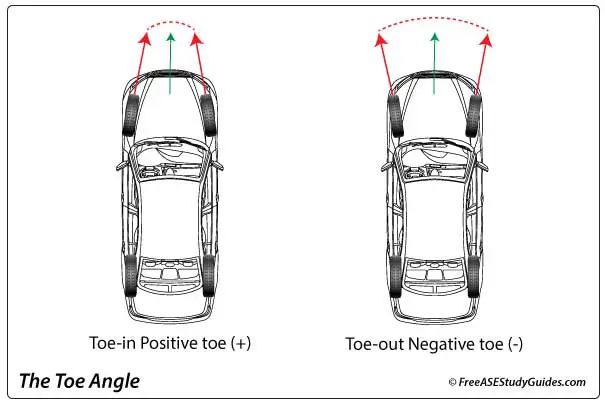
The rear toe is checked and set before performing a front-end alignment. The front toe is the last and most likely angle to require adjustment. Alignment racks display angles in fractions of inches 1/4”, but many alignment racks today use degrees (°). Toe-in is considered positive toe (+), and toe-out is considered negative toe (-).
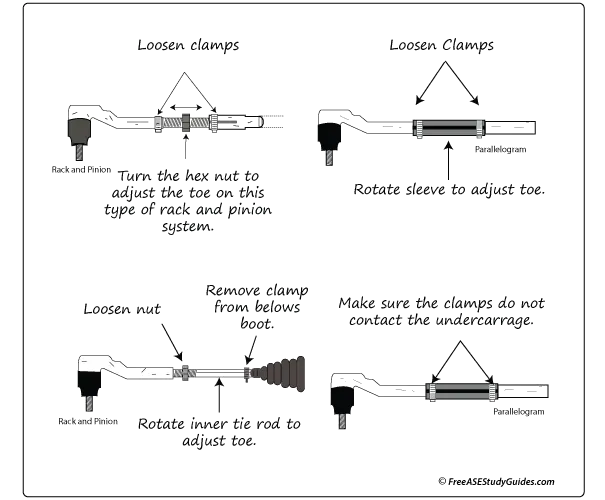
Adjust the toe by turning the inner tie rod or adjustable link. A vehicle's rear toe setting affects its steering wheel position. The preferred angle depends on the vehicle manufacturer's specifications. An alignment technician will try to achieve the preferred angle and adjust the front toe accordingly.

The specifications for the toe on this vehicle are in fractions of an inch. It is negative one-quarter of an inch plus or minus one-eighth. If there is no negative sign preceding the number, it is assumed to be positive. The vehicle's toe angles are within specifications.